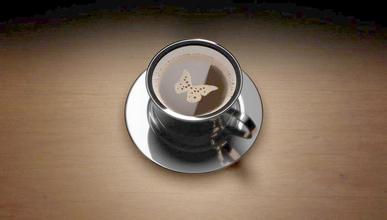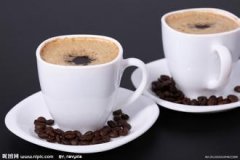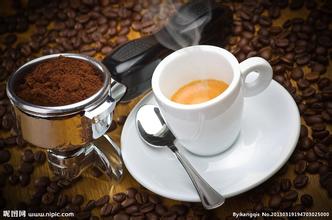Introduction to the manor producing area with very rich flavor of Sumatran coffee in Indonesia
Manning is not the name of the producing area, the place name, the port name, nor the name of the coffee breed. How did it get its name?
In fact, it is the transliteration of the mandheling people in Mandaining, Indonesia.
Manning Coffee
Manning Coffee
During the Japanese occupation of Indonesia during World War II, a Japanese soldier drank mellow coffee in a cafe, so he asked the shopkeeper the name of the coffee, and the boss mistook him for asking where you were from, so he replied: Mandaining. After the war, the Japanese soldiers recalled the "manning" they had drunk in Indonesia. As a result, 15 tons of Indonesian coffee was transported to Japan, which was very popular. That's how Manning's name came out, and the coffee merchant is now the famous PWN Coffee Company. Known as Mantenin mandheling, it is produced all over Lake Toba in northern Sumatra. The finished product has a unique fragrance of herbs and trees.
Gold Mantenin, the Japanese adopted more stringent quality control more than a decade ago. After picking beans manually for four times, they eliminated defective beans and produced gold mantenin with dark green color and equal appearance of beans, creating another wave of market demand. Even Europe and the United States are crazy about it.
The aged Agedmandheling is as sweet as honey. The successful old bean has worn away Manning's inelegant sour taste. The sour ingredients are ripe and converted to sugar, making the coffee more round and sweeter to drink. Manning is like a coffee zombie in the old age of failure, and the taste is hard to taste.
Feature editor
Manning Coffee
Her flavor is very rich, fragrant, bitter, mellow, with a little sweetness. As the Mantenin coffee beans themselves do not have sour characteristics, so the general special blending methods are based on Mantenin coffee beans, in the long-term heat preservation or preparation of iced coffee, there is no unpleasant sour taste.
After baking, the beans are very large, and the raw beans are brown or dark green with a special aroma like caramel and a mellow taste.
Working with editing
Manning Coffee
Sellers often mark Lintong Lindong and Mandheling Manning coffee as dry. In fact, the pulp and coffee seeds are often separated by a variety of mixing modes, and the more common is a backyard wet treatment. The smart farmer put the freshly picked coffee cherries into a simple peeling machine made of scrap metal, wood and bicycle parts. Then put the peeled sticky beans in a plastic woven bag to ferment overnight. The next morning the soft pulp and slime that had been fermented were manually washed away. The silver-coated coffee is pre-dried on a sheet in the front yard and sent to the middleman's warehouse to remove the silver skin and further dry. Finally, the coffee was trucked to Port Medan in Medan, the capital of Sumatra, for the third and final drying. It is also reported that in other Mandheling Mantenin producing areas, after peeling, the sticky material is allowed to dry and attach to the beans, just like the semi-washing treatment in Brazil. Then use a machine to remove the sun-dried sticky and silver skin. Finally, it goes through the same two-stage drying, first in the middleman's warehouse and then in the exporter's warehouse in Medan's port of Medan.
The processing process and Sumatran characteristics. I describe these treatments in such detail because it is not clear how the soil and atmosphere and the unusual treatment techniques and the three-stage drying each affect the formation of the characteristics of Lindong and Manning coffee. Only one thing is certain. These treatments occasionally produce excellent coffee and are extremely unstable. Only by the merciless selection in the Medan port exporter's warehouse can we ensure that the deep texture of Lintong Lin Dong and Mandheling Mantenin and the unique and low-key rich taste can emerge from the interference of other smells.

Important Notice :
前街咖啡 FrontStreet Coffee has moved to new addredd:
FrontStreet Coffee Address: 315,Donghua East Road,GuangZhou
Tel:020 38364473
- Prev

Hawaiian Kona Coffee Flavor Flavor Manor introduces boutique coffee beans
In Hawaii, you can watch the fiery sunset sink into the red-orange sea, feel the fresh air filled with the scent of flowers, and sit by the sea and drink a cup of Kona coffee. I'm afraid there is no place in the world that can offer you such enjoyment. The earliest settlers in Hawaii arrived here between 300 and 400 AD, and historians speculate that they came from the Marcos group.
- Next

Introduction of Costa Rican coffee boutique coffee beans with unique strong flavor
All the coffee trees planted in Costa Rica are Arabica coffee trees. through improvement, the quality of coffee beans is better and more stable. in order to facilitate picking, coffee trees are kept at a height of about 2 meters through continuous pruning. The coffee that people eat is the taste of the seeds in the fruit that are brewed in water. After picking raw coffee beans, the peel, pulp, seed film and sun exposure must be removed.
Related
- Detailed explanation of Jadeite planting Land in Panamanian Jadeite Manor introduction to the grading system of Jadeite competitive bidding, Red bid, Green bid and Rose Summer
- Story of Coffee planting in Brenka region of Costa Rica Stonehenge Manor anaerobic heavy honey treatment of flavor mouth
- What's on the barrel of Blue Mountain Coffee beans?
- Can American coffee also pull flowers? How to use hot American style to pull out a good-looking pattern?
- Can you make a cold extract with coffee beans? What is the right proportion for cold-extracted coffee formula?
- Indonesian PWN Gold Mandrine Coffee Origin Features Flavor How to Chong? Mandolin coffee is American.
- A brief introduction to the flavor characteristics of Brazilian yellow bourbon coffee beans
- What is the effect of different water quality on the flavor of cold-extracted coffee? What kind of water is best for brewing coffee?
- Why do you think of Rose Summer whenever you mention Panamanian coffee?
- Introduction to the characteristics of authentic blue mountain coffee bean producing areas? What is the CIB Coffee Authority in Jamaica?

